 Today, I’m recommending something to improve your mood when you’re persistently looking for something sweet to go with a cup of coffee. Since I came back from Italy, I’ve been able to drink as many as two or three cups of Americano coffee a day. I drink it without any addition of milk or sugar. But I really enjoy combining it with something sweet that can be immersed in coffee. Cantuccini are a type of Italian crisp cookies with plenty of almonds. My version features a small modification – I first roast the almonds and coat them in caramel. These cookies are easy to make, and the whole crux is based on the fact that you need to bake them twice, owing to which they are crispy and crunchy. Would anyone like some? And maybe something sweet for Valentine’s Day?
Today, I’m recommending something to improve your mood when you’re persistently looking for something sweet to go with a cup of coffee. Since I came back from Italy, I’ve been able to drink as many as two or three cups of Americano coffee a day. I drink it without any addition of milk or sugar. But I really enjoy combining it with something sweet that can be immersed in coffee. Cantuccini are a type of Italian crisp cookies with plenty of almonds. My version features a small modification – I first roast the almonds and coat them in caramel. These cookies are easy to make, and the whole crux is based on the fact that you need to bake them twice, owing to which they are crispy and crunchy. Would anyone like some? And maybe something sweet for Valentine’s Day?
* * *
Podpowiadam Wam dzisiaj, czym umilić sobie moment w którym usilnie poszukujemy czegoś słodkiego do kawy. Odkąd wróciliśmy z Włoch, w ciągu dnia potrafię wypić dwie albo trzy kawy typu americano. Piję ją bez dodatku mleka i cukru. Za to chętnie z czymś słodkim, co można zanurzyć w kawie. Cantuccini to rodzaj włoskich kruchych ciastek z dużą ilością migdałów. Moja wersja przewiduje jednak drobną modyfikację – migdały wcześniej prażę i obtaczam w karmelu. Ciastka są proste w wykonaniu, a cała heca polega na tym, że piecze się je dwukrotnie, dzięki czemu są kruche i chrupiące. To, kto się skusi? A może na walentynki dla osłody…?
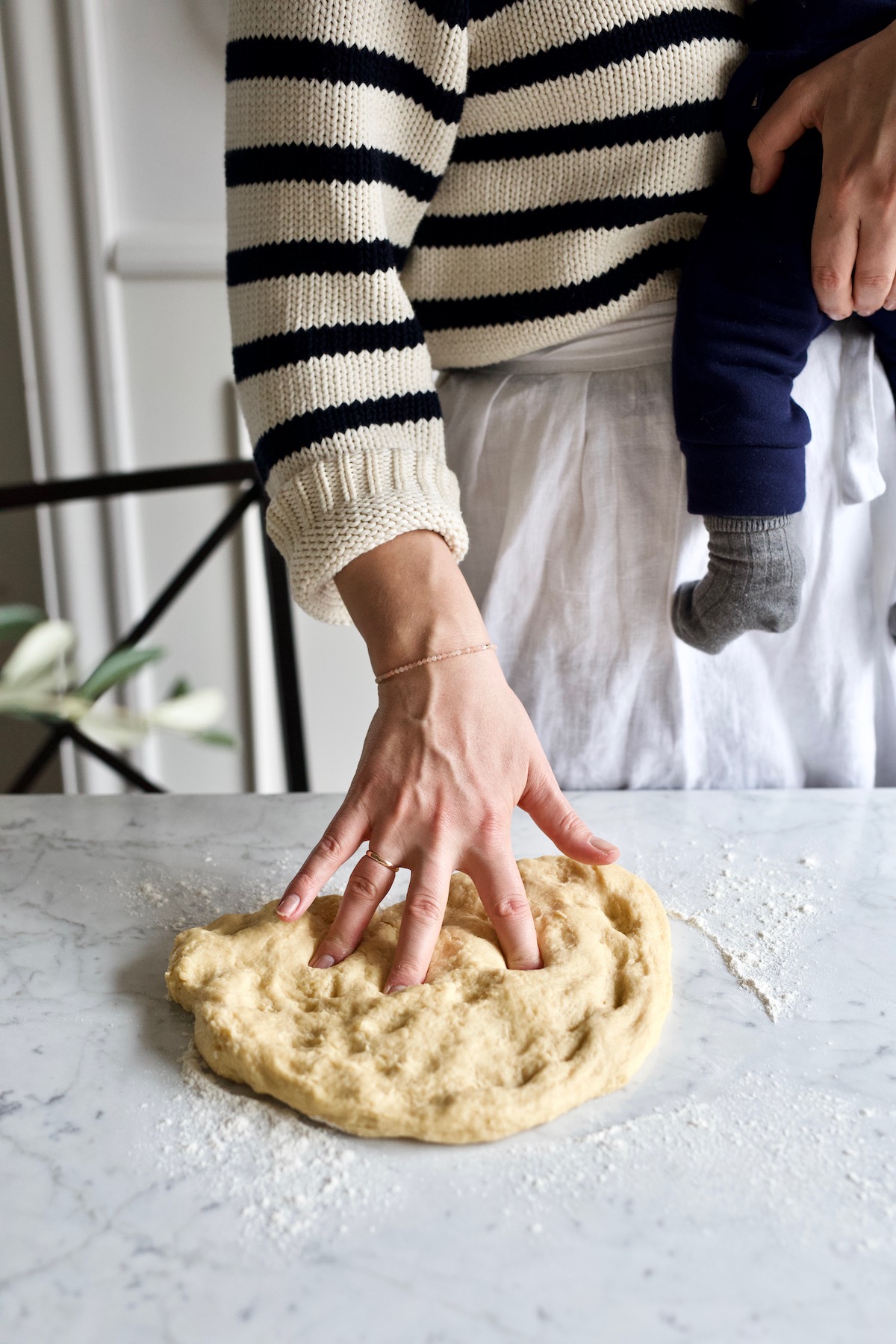 Ingredients:
Ingredients:
dough:500 g of wheat flour
1-2 tablespoons of Limoncello
150 g of sugar
1 teaspoon of baking powder
80g of butterlemon zest from 1 lemon
80 ml of whole milk (3.2% butterfat)
3 eggspinch of salt
roasted caramel-coated almonds:
200 g of almonds (roasted beforehand in a dry pan or in an oven preheated to 180ºC with the oven function with the upper and lower heating elements switched on)
approx. 100 ml of water100 g of cane sugar
* * *
Skład:ciasto:
500 g mąki pszennej
1-2 łyżki likieru Limoncello
150 g cukru
1 łyżeczka proszku do pieczenia
80 g masłaskórka otarta z 1 cytryny
80 ml mleka 3,2%
3 jajka
szczypta soli
prażone migdały w karmelu:
200 g migdałów (wcześniej uprażonych na suchej patelni lub w piekarniku rozgrzanym w 180*C, opcja góra-dół)
ok. 100 ml wody
100 g cukru trzcinowego
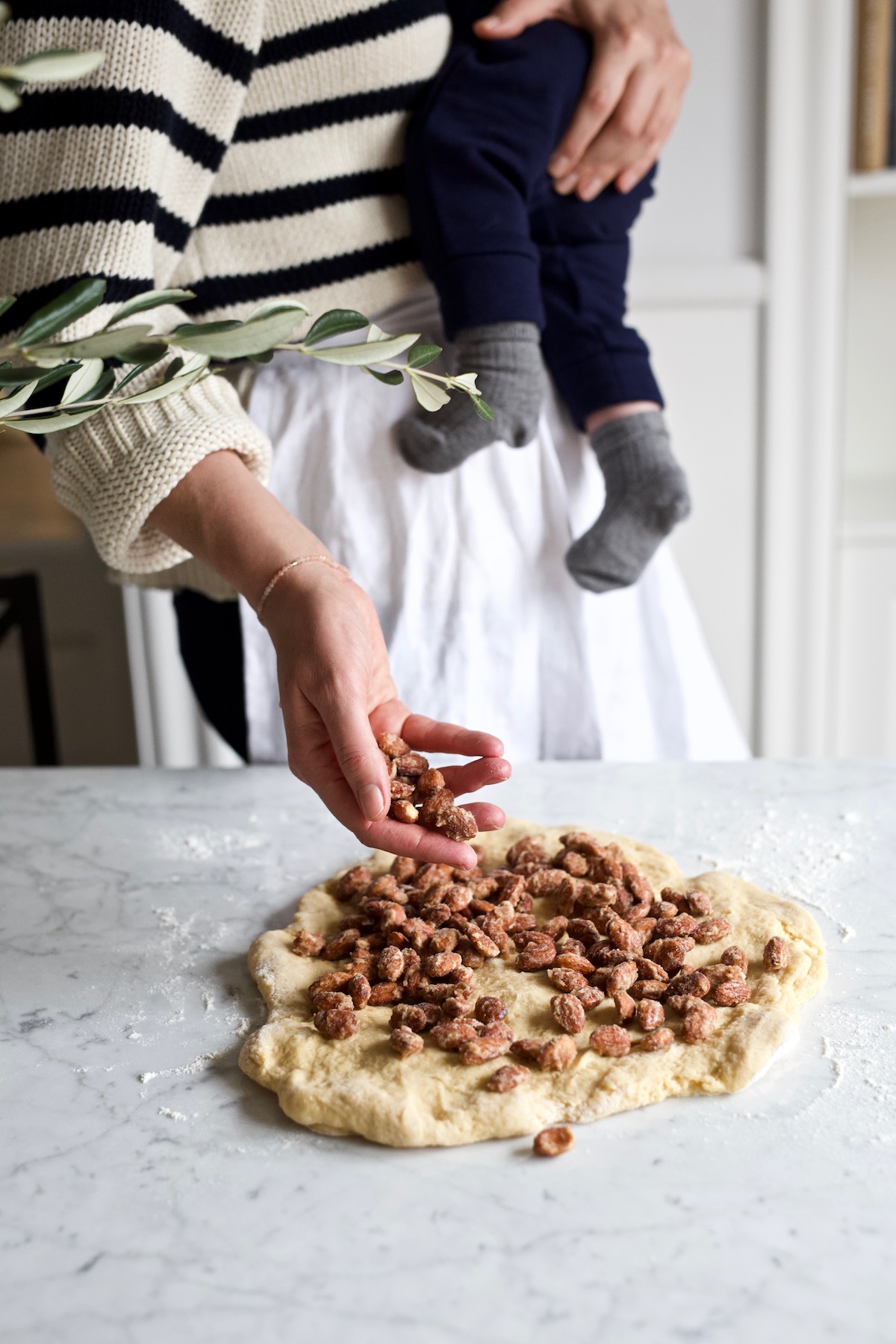
Directions:
1. To prepare roasted almonds: melt sugar with water in a pan. Add roasted almonds, decrease the heat, and stir the pan from time to time so that the almonds become coated with caramel. When the mixture gets denser, place the hot almonds on a baking tray. Remember to separate them.
2. To prepare cantuccini: mix flour, salt, baking powder, and sugar in a wide bowl. Add eggs, cooled butter, lemon zest, milk, and Limoncello. Knead everything until smooth (the texture should resemble shortcrust pastry). Roll it out (see the photo) and place the ready almonds on top. Knead everything again.
3. Divide the dough into four equal parts and form rolls. Place the prepared dough on the baking tray lined with parchment paper. Bake in the oven preheated to 180ºC (use the oven function with upper and lower heating elements switched on) for 30 minutes, then slowly and carefully take out the baking tray, wait 10 minutes, and cut the rolls into longitudinal pieces. Place the cut cantuccini back on the baking tray and bake them for 20 minutes in 180ºCTip: it’s best to keep the baked cantuccini in a closed container.
* * *
A oto jak to zrobić:
1. Aby przygotować prażone migdały: na patelni rozpuszczamy cukier z wodą. Następnie dodajemy uprażone migdały, zmniejszamy ogień i co jakiś czas potrząsamy patelnią, by bakalie obkleiły się karmelem. Gdy masa zgęstnieje gorące migdały przekładamy na blaszę i rozdzielamy je.
2. Aby przygotować cantuccini: w szerokiej misce mieszamy mąkę, sól, proszek do pieczenia i cukier. Dodajemy jajka, schłodzone masło, skórkę z cytryny, mleko i limoncello. Całość ugniatamy do uzyskania jednolitej masy (konsystencja ciasta przypomina kruche ciasto). Rozwałkowujemy na placek (patrz na zdjęciu) i rozkładamy gotowe migdały. Ponownie zagniatamy.
3. Ciasto dzielimy na cztery równe części i z każdej z nich rolujemy wałek. Tak przygotowane ciasto przekładamy na blachę wyłożoną papierem do pieczenia. Pieczemy w rozgrzanym piekarniku w 180*C opcja: góra-dół przez 30 minut, następnie ostrożnie wyjmujemy blachę, czekamy 10 minut i kroimy na podłużne kawałki. Pokrojone cantuccini przekładamy ponownie na blachę i pieczemy 20 minut w 180*C.
Wskazówka: upieczone cantuccini najlepiej przechowywać w zamkniętym pojemniku.
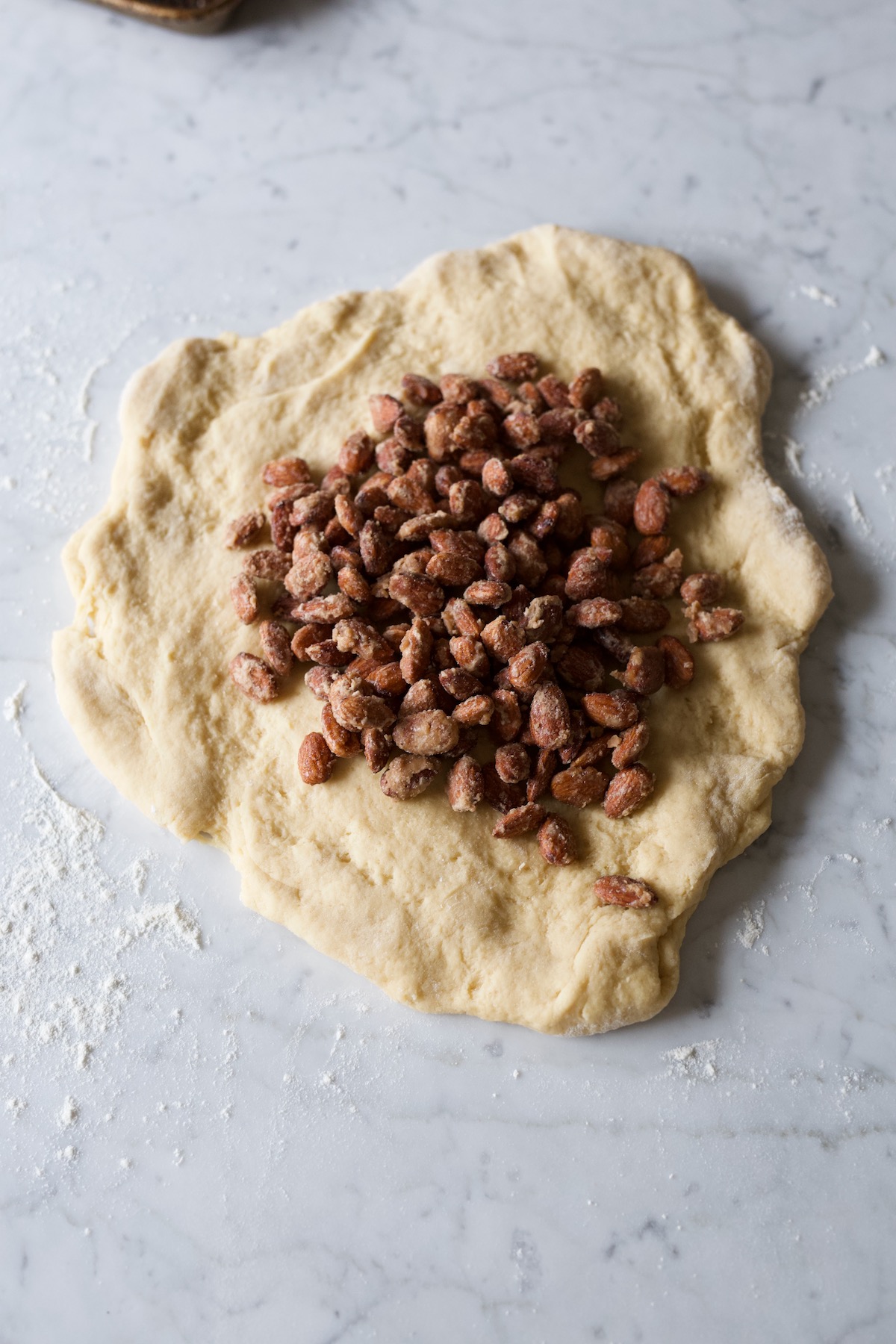 Mix flour, salt, baking powder, and sugar in a wide bowl. Add eggs, cooled butter, lemon zest, milk, and Limoncello. Knead everything until smooth.
Mix flour, salt, baking powder, and sugar in a wide bowl. Add eggs, cooled butter, lemon zest, milk, and Limoncello. Knead everything until smooth.
W szerokiej misce mieszamy mąkę, sól, proszek do pieczenia i cukier. Dodajemy jajka, schłodzone masło, skórkę z cytryny, mleko i limoncello. Całość ugniatamy do uzyskania jednolitej masy.
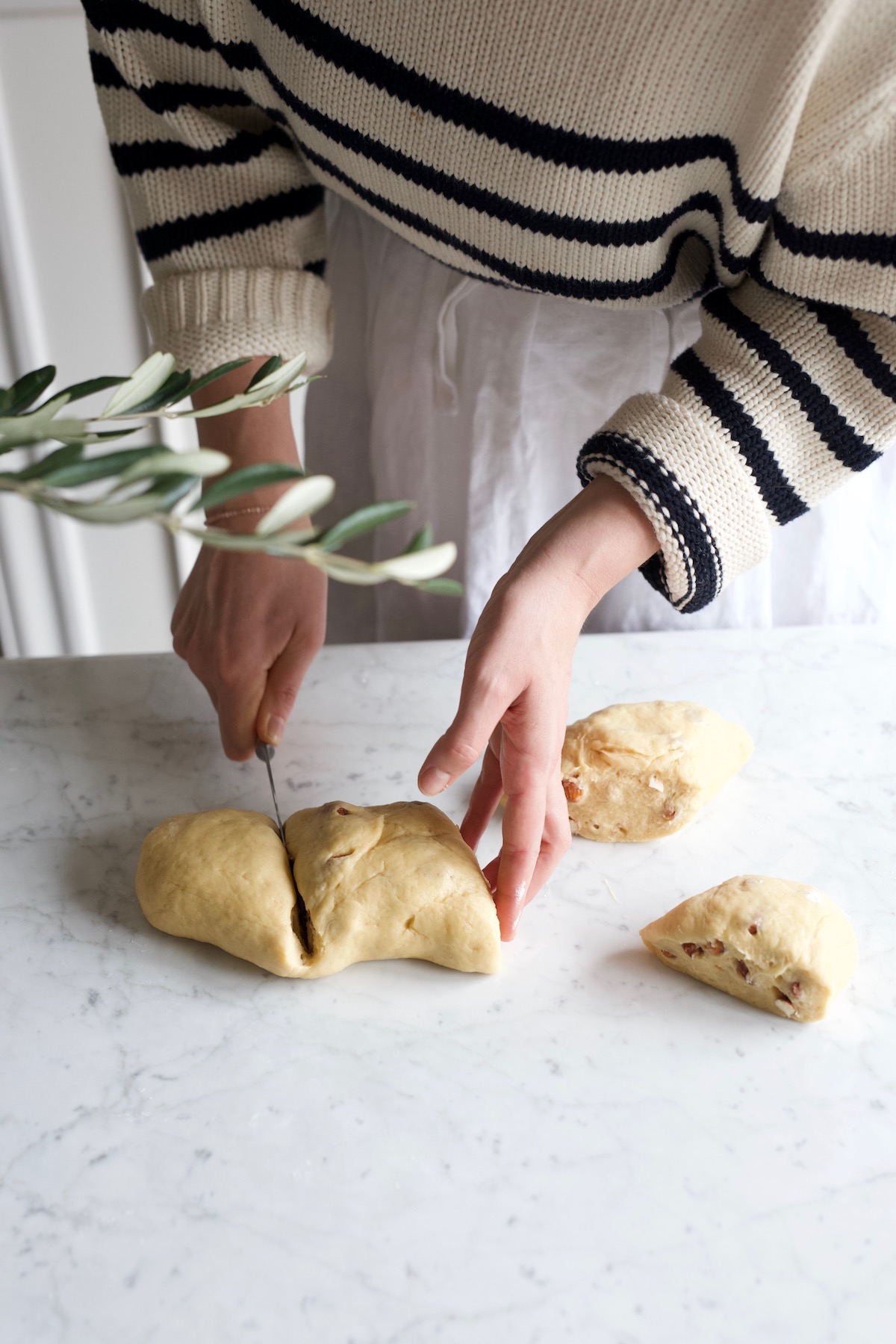 Roll out the dough and place ready roasted almonds on top. Knead everything again. Divide the dough into four equal parts and form rolls. Place the prepared dough on the baking tray lined with parchment paper.
Roll out the dough and place ready roasted almonds on top. Knead everything again. Divide the dough into four equal parts and form rolls. Place the prepared dough on the baking tray lined with parchment paper.
Ciasto rozwałkowujemy na placek i rozkładamy gotowe migdały. Ponownie zagniatamy. Ciasto dzielimy na cztery równe części i z każdej z nich rolujemy wałek. Tak przygotowane ciasto przekładamy na blachę wyłożoną papierem do pieczenia.
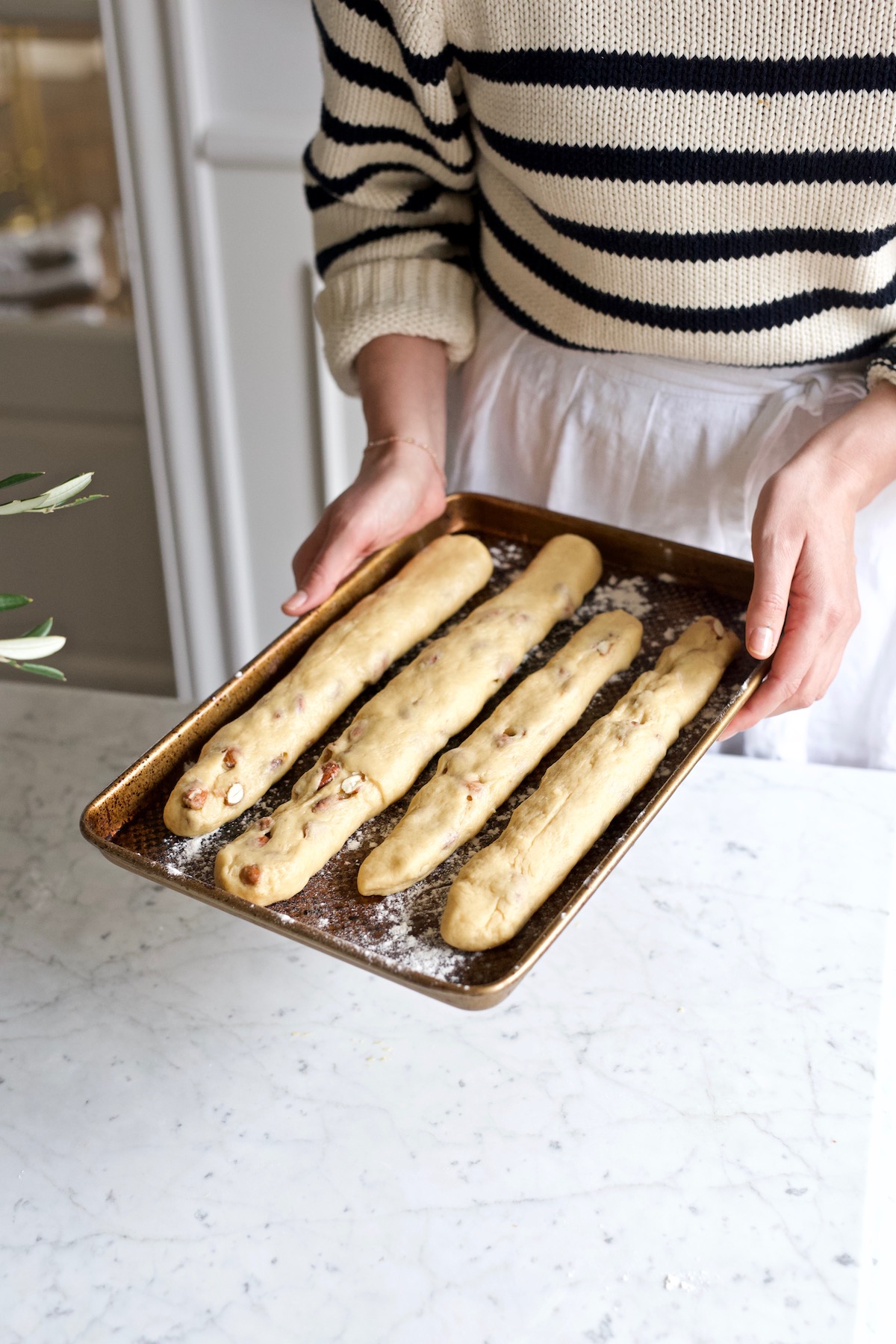 Bake in the oven preheated to 180ºC (use the oven function with upper and lower heating elements switched on) for 30 minutes, then slowly and carefully take out the baking tray, wait 10 minutes and cut the rolls into longitudinal pieces. Place the cut cantuccini back on the baking tray and bake them for 20 minutes in 180ºC
Bake in the oven preheated to 180ºC (use the oven function with upper and lower heating elements switched on) for 30 minutes, then slowly and carefully take out the baking tray, wait 10 minutes and cut the rolls into longitudinal pieces. Place the cut cantuccini back on the baking tray and bake them for 20 minutes in 180ºC
Pieczemy w rozgrzanym piekarniku w 180*C opcja: góra-dół przez 30 minut, następnie ostrożnie wyjmujemy blachę, czekamy 10 minut i kroimy na podłużne kawałki. Pokrojone cantuccini przekładamy ponownie na blachę i pieczemy 20 minut w 180*C.









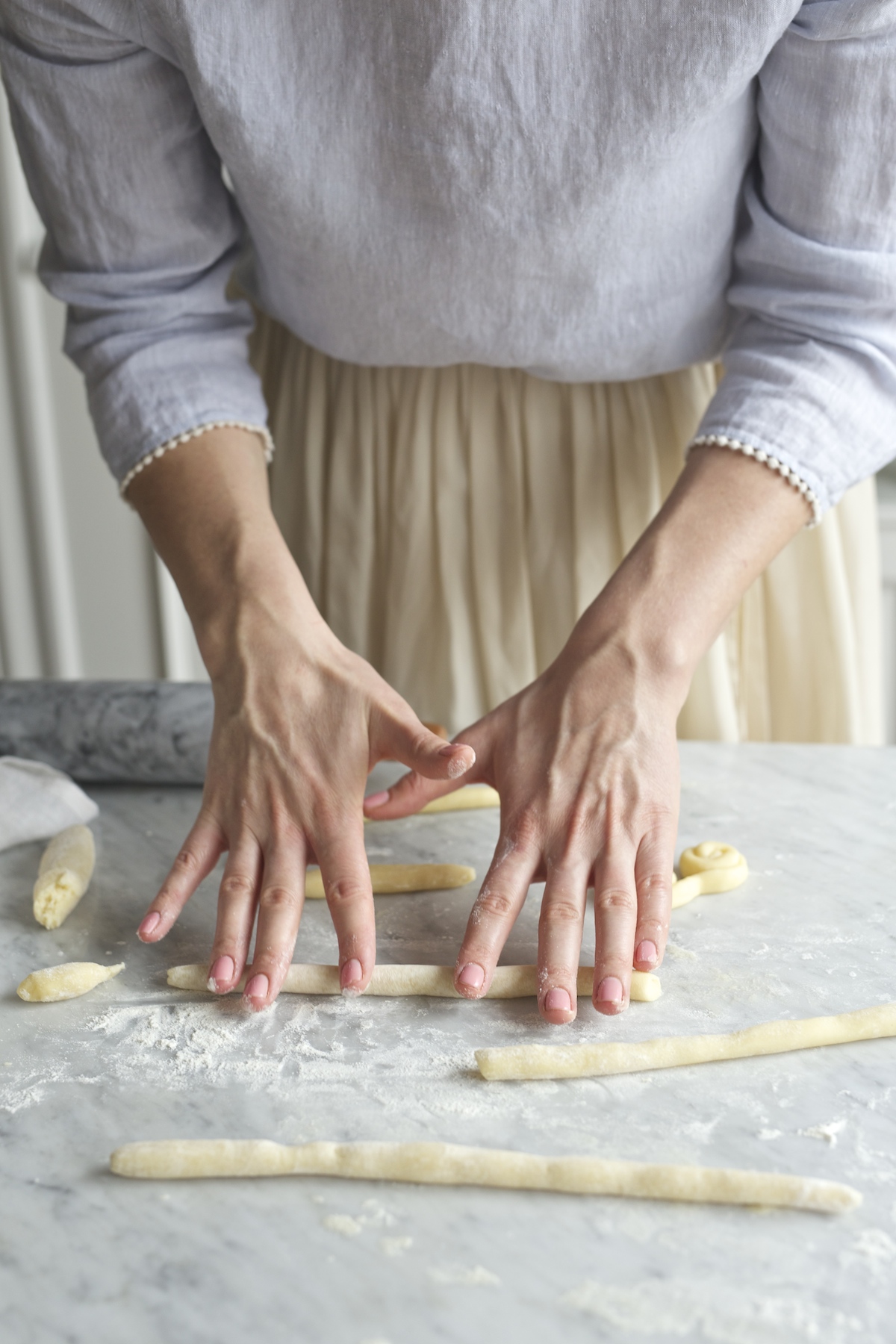
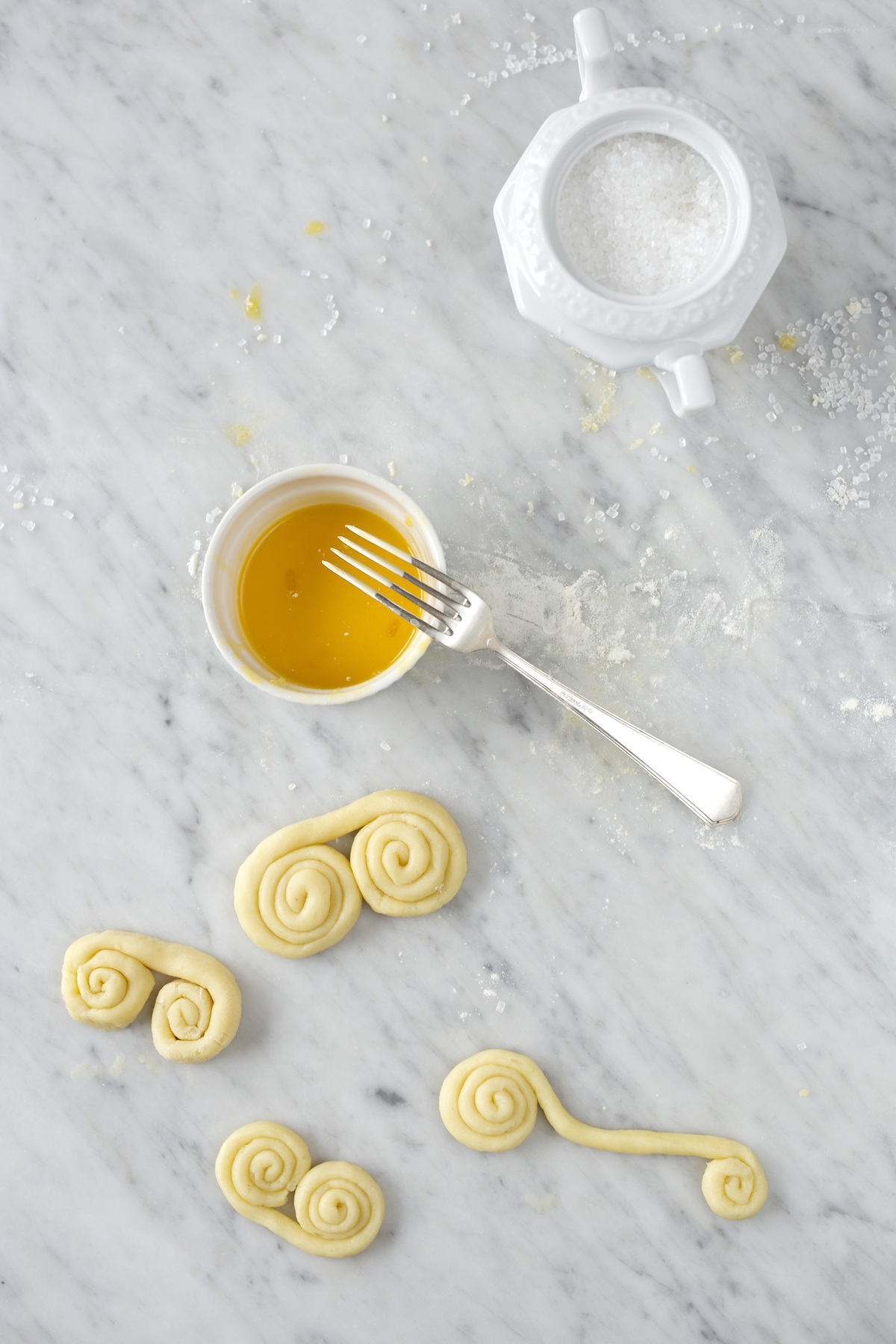
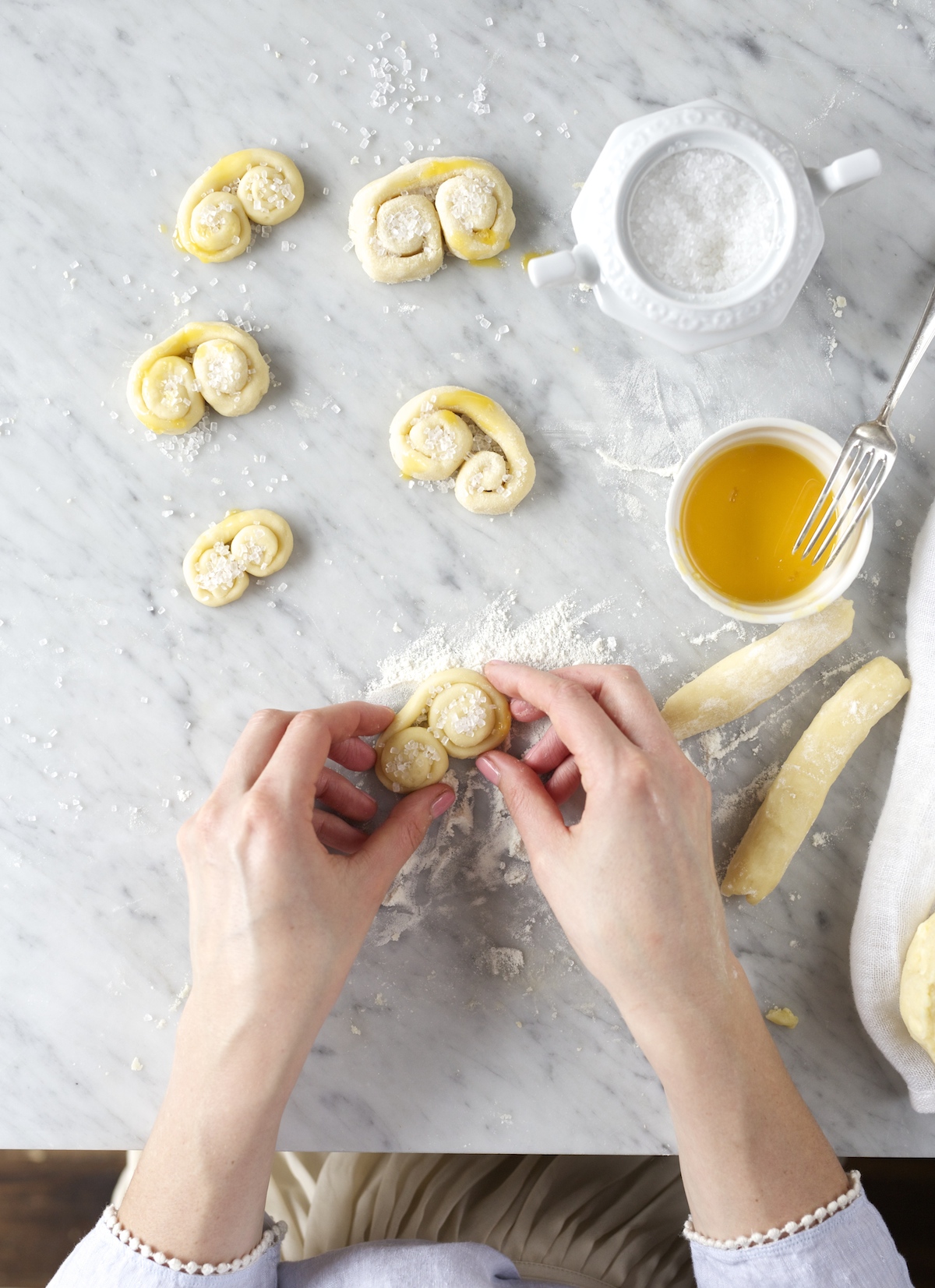
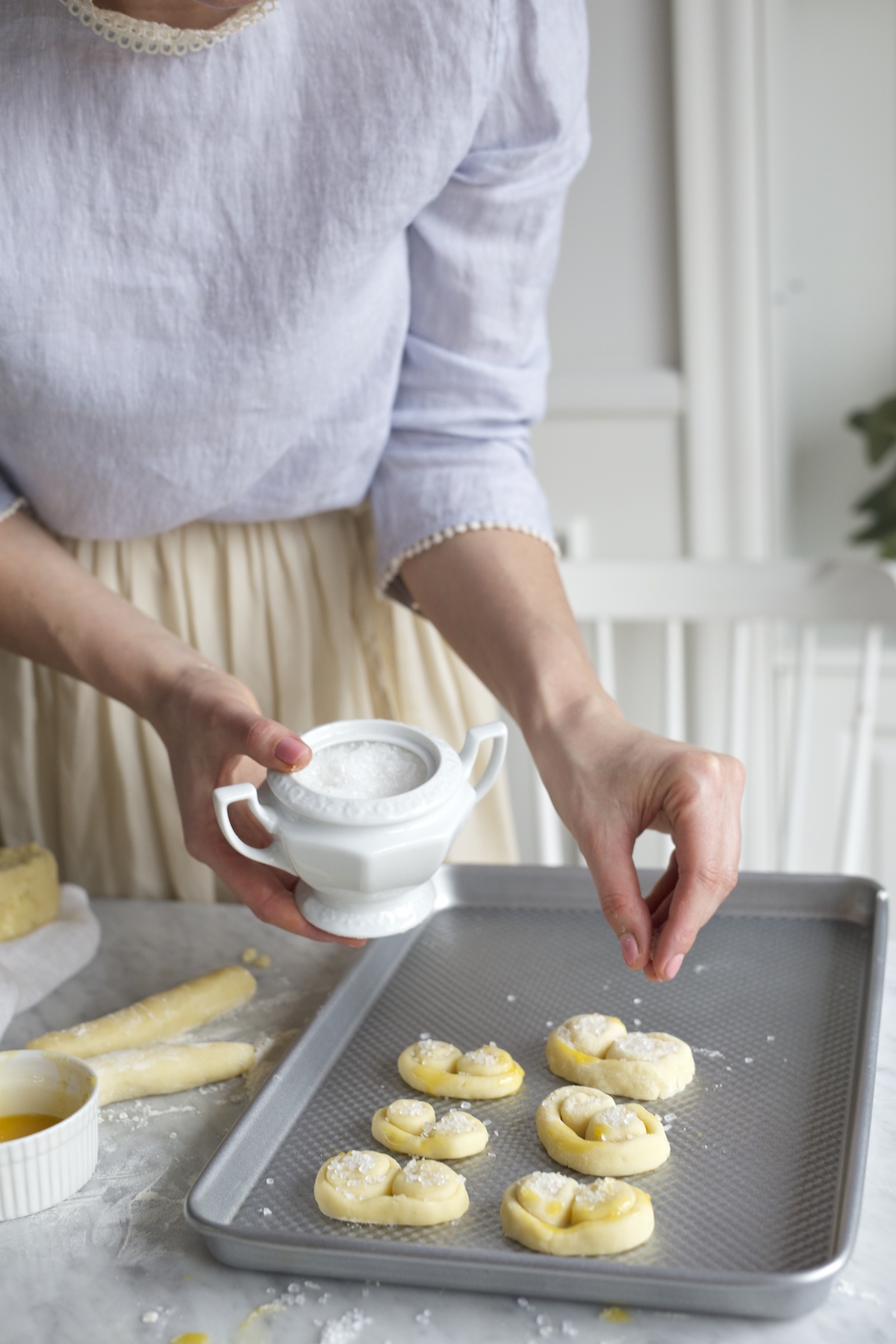

 But are they edible? That is the first reaction to the fact that the cookies are prepared without the use of flour, eggs, and sugar. Yeah, they are edible! Admittedly, it is rather difficult to convince the avid fans of crispy tars with salted caramel to try them, but if you want to make home-made pastries a little bit more diet-friendly or decrease the amount of sugar in sweets consumed by your children then it is worth trying out this recipe!
But are they edible? That is the first reaction to the fact that the cookies are prepared without the use of flour, eggs, and sugar. Yeah, they are edible! Admittedly, it is rather difficult to convince the avid fans of crispy tars with salted caramel to try them, but if you want to make home-made pastries a little bit more diet-friendly or decrease the amount of sugar in sweets consumed by your children then it is worth trying out this recipe!






 The texture isn't dense, and the dough is rather sticky.
The texture isn't dense, and the dough is rather sticky. Heat rapeseed oil in a pan until it starts to sizzle slightly. Use the pastry bag to create approx. 2,5 cm dough pieces – we can also use a knife for help. Fry until the crust is golden.
Heat rapeseed oil in a pan until it starts to sizzle slightly. Use the pastry bag to create approx. 2,5 cm dough pieces – we can also use a knife for help. Fry until the crust is golden.
 Place the fried doughnuts on a paper towel and coat them in icing sugar.
Place the fried doughnuts on a paper towel and coat them in icing sugar.




